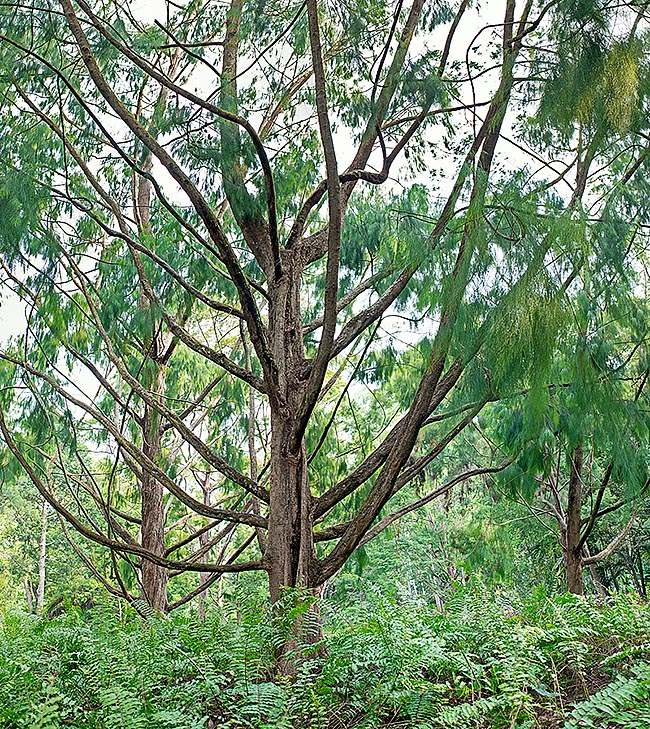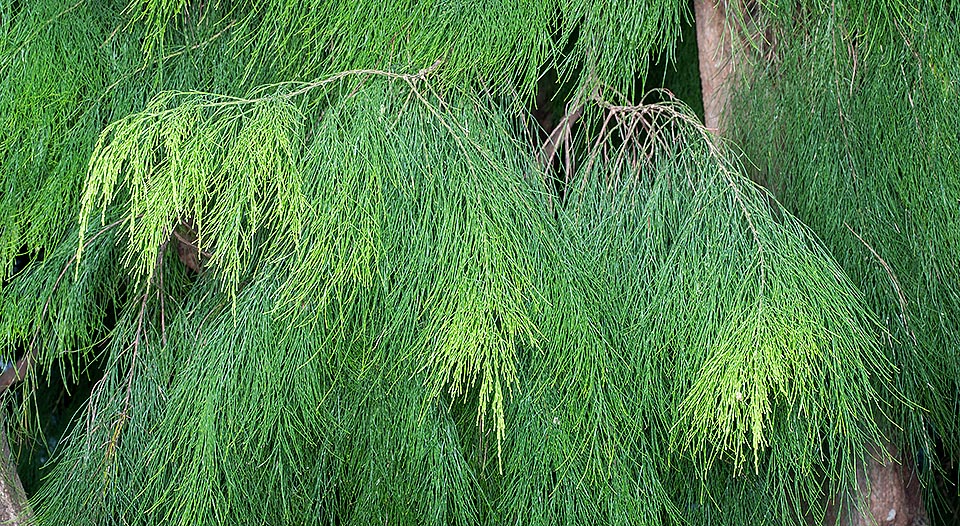Family : Casuarinaceae

Text © Pietro Puccio

English translation by Mario Beltramini

Gymnostoma papuanum is a New Guinea dioecious evergreen, 10-30 m tall © Giuseppe Mazza
The name of the genus is the combination of the Greek adjective “γυμνός” (gymnós) = naked and of the substantive “στόμα” (stoma) = mouth, orifice, with reference to the non protected stomata; the specific name is the Latin adjective “papuanus, a, um” = of Papua, with reference to its place of origin.
Common names: hat yar, jimi, malasalu (Papua New Guinea).
The Gymnostoma papuanum (S.Moore) L.A.S.Johnson (1982) is a diocieous evergreen tree, 10-30 m tall, with trunk up to 45 cm of diameter and wrinkled bark of pale brown colour, longitudinally fissured.
Thin filiform quadrangular branchlets, of green grey colour, that perform the chlorophyllian function, with little deep groves between the edges that expose the stomata.
The leaves, arranged in verticils of 4 in correspondence to the nodes, are reduced to tiny triangular scales almost invisible. The roots can fix the atmospheric nitrogen through the radical nodules (actinorhizas) formed by bacteria belonging to the genus Frankia Brunchorst (1866). The inflorescences are terminal, the male ones are spikes with flowers formed by only one stamen, the female ones are capitula similar to strobili with flowers having no calyx and corolla enclosed by two bracts that lignify when ripe. The fruits are samarae, about 0,6 cm long, freed by the bracts when ripe and dispersed by the wind.
It reproduces by seed, that has a short-lasting germinability, in sandy loam maintained humid at the temperature of 24-26 °C. Fast growing species, is considered as one of the most ornamental of the family of the Casuarinaceae thanks to its lightness and elegance of the crown.

The quadrangular filiform branchlets perform the chlorophyllian function, with little deep groves among the edges that expose the stomata. The leaves, arranged in verticils of 4 at the nodes, are reduced to tiny triangular scales almost invisible. The roots fix the atmospheric nitrogen with nodules formed by bacteria © G. Mazza
Synonyms: Casuarina papuana S.Moore (1923).
→ To appreciate the biodiversity within the CASUARINACEAE family please click here.
